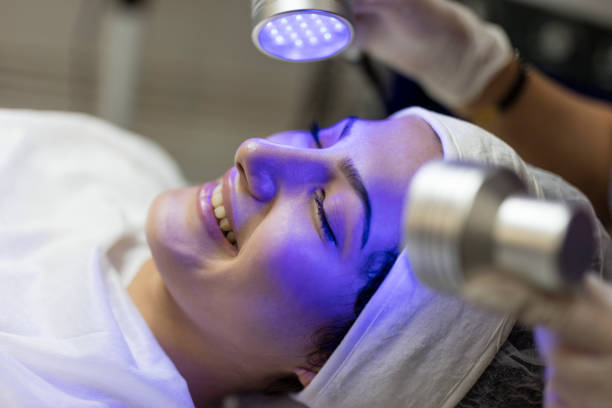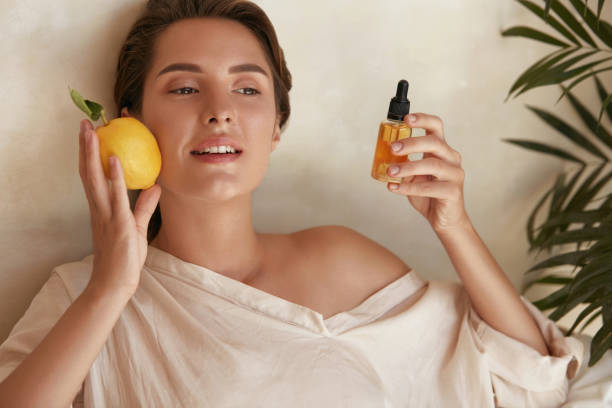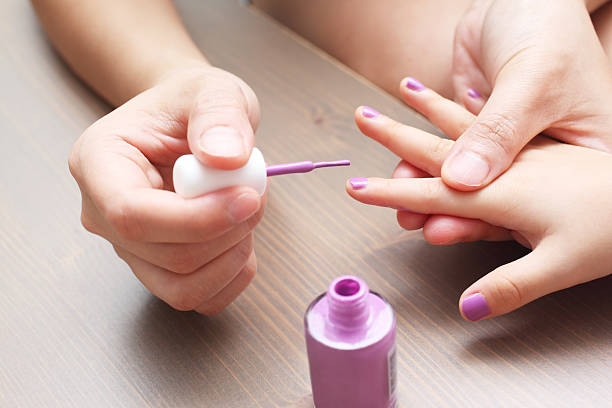
My friend, if you’re someone who carries their phone around with them, then your skin may be vulnerable to a silent enemy. This enemy slowly but surely affects your skin and shows its ugly side effects over time. This is the effect of blue light on the skin.
Let’s get into the details about the effects of blue light on the skin.
What’s blue light?
Light is a form of energy that makes things visible. The intensity of the light affects its spectrum. UV rays are weaker than blue light, so blue light falls under the high-intensity category. We all know the dangers of ultraviolet rays from the sun, and blue light is only one step below that. It’s pretty scary.
From where does the blue light originate?
It can be so dangerous for your skin that you want to stop using it. You must understand where the light comes from to do this. Blue light is produced by LEDs (Light Emitting Distors) found in our mobile screens, laptop screens, and ceiling lights. They make our rooms brighter.
It is complicated to quit using blue light when it is all around you. The question is: Why do we continue to use it when it’s so harmful? Do we have it from the beginning? What are the alternatives? How does it harm the skin? These are just a few of the many questions you may be asking. These are the questions we will be answering in this blog.
You can recall your childhood without a phone, a laptop, or LED lights. This is because there was no awareness of the effects of blue light on the skin. Now, everyone has a phone or a laptop and is glued to it. We didn’t have tube lights or LEDs on the ceiling. The halogen bulbs we used did not emit harmful rays. What went wrong? Was it a mistake in our race to modernization? Perhaps.
Blue light emitting devices have been banned from our society since the dawn of time. Perhaps a few decades ago, we were in a better position. What are the alternatives to blue light, and what steps can be taken to avoid it?
People wear zero-powered glasses or have their spectacles filmed using a blue light filter. This protects their eyes against the harmful effects of blue light. You may have also noticed increased advertisements for different types of room lighting—these range from warm daylight, and bright white.
Journal of Cosmetic Dermatology indicates that blue light from electronic devices can cause skin cell damage, including shrinkage and death. These can accelerate the aging process. These changes can be caused by even 60 minutes of screen time.
How to protect your skin from the harmful effects of blue light
1.Use a sunscreen that provides UVA and UVB protection
Some people believe sunscreens are more effective if they have a higher SPF. This is false. SPF 30 and SPF60 offer only 2% of the difference in protecting your skin against harmful rays. It would be best if you had UVA and UVB protection. These rays can cause early aging and tanning.
2.Use skin care products that contain antioxidants
Choose skincare products that are rich in antioxidants when choosing. This strengthens the skin barrier, reducing blue light’s harmful effects. Antioxidants prevent the formation of free radicals that can cause cell damage. One example is green tea skin elixir, a face care product you can use frequently.
3.Keep your skin moisturized
Skin can refer to both the body and the face. Good quality skin care products create a protective layer that protects the skin from the sun’s harmful rays. After you shower, apply a natural moisturizer to your face and body. This helps to strengthen the skin’s moisture barrier.
4.You can use a screen protector or light blue glasses.
To reduce the harmful rays from digital gadgets, it is recommended to install a blue-light screen protector. This transparent sheet is a barrier to prevent the screen from emitting blue light.
5.The phone should be kept at arm’s reach
Your phone should always be within arm’s reach. This is a simple but effective technique. The harmful effects of blue lights can be reduced by moving the screen away from your skin. It also reduces overall digital gadget use. This eliminates blue light’s damaging effects and allows the skin to breathe.
6.Night mode for gadgets
It is better to switch your screen to night mode at night. This setting disables blue light and allows yellow light to be displayed. It’s widely used to reduce eye strain and prevent skin from aging.
Is Blue light all bad?
A big No! Blue light can hurt your skin if it is not used correctly. However, it has many therapeutic properties. A blue light device was used in AAD research to treat a small patch of psoriasis for people with mild to severe plaque. The procedure was carried out for four weeks. It helped reduce the reddening and minimize the size of the affected area. The effects were not significant.
It can also be used to treat mild to severe cases of acne. Research showed that blue light therapy reduced the number of blackheads and whiteheads after seven days: of acne Or pimples.



